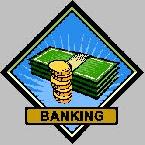
 |
|
| Financial Terms | |
| Modeling |
|
Information about financial, finance, business, accounting, payroll, inventory, investment, money, inventory control, stock trading, financial advisor, tax advisor, credit.
Main Page: payroll, tax advisor, credit, business, stock trading, financial advisor, investment, accounting, Also see related: home buyer, condo, mortgage, credit, buy home, real estate, homebuyer, homes, homebuying, |
Definition of Modeling
ModelingThe process of creating a depiction of reality, such as a graph, picture, or mathematical
Related Terms:Markowitz modelA model for selecting an optimum investment portfolio, Monte-Carlo simulationA mathematical modeling process. For a model that economic components modelAbrams’ model for calculating DLOM based on the interaction of discounts from four economic components. Gordon modelpresent value of a perpetuity with growth. log size modelAbrams’ model to calculate discount rates as a function of the logarithm of the value of the firm. QMDM (quantitative marketability discount model)model for calculating DLOM for minority interests r the discount rate Arbitrage-free option-pricing modelsYield curve option-pricing models.  Asset pricing modelA model for determining the required rate of return on an asset. Asset pricing modelA model, such as the Capital Asset Pricing model (CAPM), that determines the required Binomial option pricing modelAn option pricing model in which the underlying asset can take on only two Black-Scholes option-pricing modelA model for pricing call options based on arbitrage arguments that uses Capital asset pricing model (CAPM)An economic theory that describes the relationship between risk and Constant-growth modelAlso called the Gordon-Shapiro model, an application of the dividend discount Deterministic modelsLiability-matching models that assume that the liability payments and the asset cash Discounted dividend model (DDM)A formula to estimate the intrinsic value of a firm by figuring the Dividend discount model (DDM)A model for valuing the common stock of a company, based on the  Dividend growth modelA model wherein dividends are assumed to be at a constant rate in perpetuity. Extrapolative statistical modelsmodels that apply a formula to historical data and project results for a Factor modelA way of decomposing the factors that influence a security's rate of return into common and Garmen-Kohlhagen option pricing modelA widely used model for pricing foreign currency options. Index modelA model of stock returns using a market index such as the S&P 500 to represent common or Market modelThis relationship is sometimes called the single-index model. The market model says that the Markowitz diversificationA strategy that seeks to combine assets a portfolio with returns that are less than Markowitz efficient frontierThe graphical depiction of the markowitz efficient set of portfolios Markowitz efficient portfolioAlso called a mean-variance efficient portfolio, a portfolio that has the highest Markowitz efficient set of portfoliosThe collection of all efficient portfolios, graphically referred to as the Pie model of capital structureA model of the debt/equity ratio of the firms, graphically depicted in slices of  Single factor modelA model of security returns that acknowledges only one common factor. Single index modelA model of stock returns that decomposes influences on returns into a systematic factor, Simple linear trend modelAn extrapolative statistical model that asserts that earnings have a base level and SimulationThe use of a mathematical model to imitate a situation many times in order to estimate the Single-index modelRelated: market model Stochastic modelsLiability-matching models that assume that the liability payments and the asset cash flows Two-factor modelBlack's zero-beta version of the capital asset pricing model. Two-state option pricing modelAn option pricing model in which the underlying asset can take on only two Value-at-Risk model (VAR)Procedure for estimating the probability of portfolio losses exceeding some Yield curve option-pricing modelsmodels that can incorporate different volatility assumptions along the Capital Asset Pricing Model (CAPM)A model for estimating equilibrium rates of return and values of Internet business modela model that involves Binomial modelA method of pricing options or other equity derivatives in Black-Scholes modelThe first complete mathematical model for pricing capital asset pricing model (CAPM)Theory of the relationship between risk and return which states that the expected risk constant-growth dividend discount modelVersion of the dividend discount model in which dividends grow at a constant rate. dividend discount modelComputation of today’s stock price which states that share value equals the present value of all expected future dividends. percentage of sales modelsPlanning model in which sales forecasts are the driving variables and most other variables are simulation analysisEstimation of the probabilities of different possible outcomes, e.g., from an investment project. Related to : financial, finance, business, accounting, payroll, inventory, investment, money, inventory control, stock trading, financial advisor, tax advisor, credit. |